The Beginning
Imagine being tasked with designing a new office for yourself. You could choose where the windows would go, how much soundproofing there would be, what colors and materials you’d be surrounded by - sounds fun, right? Now imagine you will design an office for not only yourself but fifty of your colleagues. You have to make decisions about how you work best, how each other individual works best, and then how the group works best together. Is it starting to sound a little less exciting? And what if those 50 colleagues were professional architects and designers? Talk about pressure! This is the task that one of our project teams has been facing for the past year as we’ve been preparing to move. Although we’re only moving six blocks, the atmosphere of the neighborhood is different, and the space (previously home to newspaper printing presses for over 65 years) was a blank slate. This allowed us to really be creative in designing the space. But with over 50 professional opinions, how do you make it all work? I sat down with three members of the project team to get their thoughts on the process.
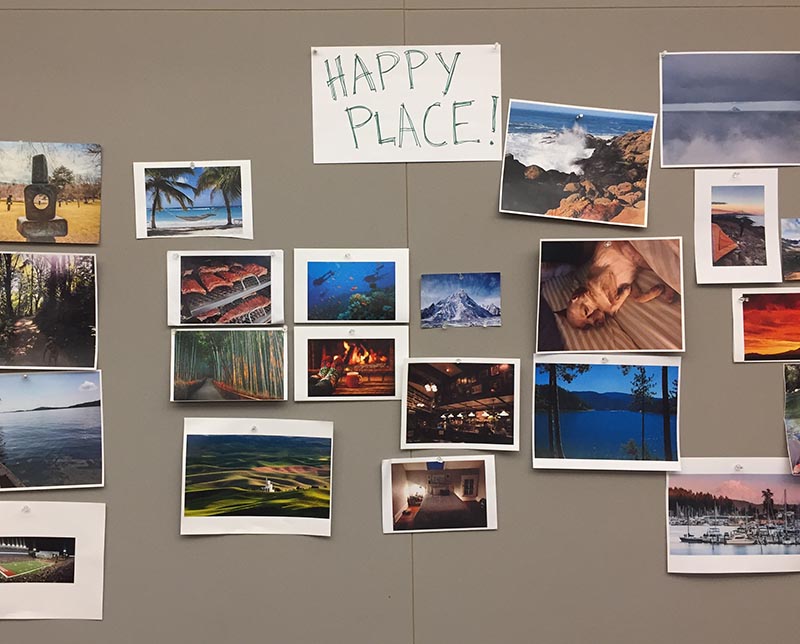
Project Manager Emily Dawson recalls her thoughts on being asked to join the project team. “From the beginning I was thinking ‘This is a dubious honor.’ And I continue to refer to it as that because it is an honor, but it is fraught, as well, because the audience is so discerning and opinionated.”
For Whitney Ranson, the project was one of their earliest introductions to SRG: “It was unique for me, because at the same time I was joining the project, I was joining the firm. So that was a little intimidating, in terms of designing something that people are going to interact with on a day-to-day basis, and initially I didn’t know the culture that well. It was a good way to quickly get to know my coworkers and the culture of the firm.”
Bethany Gelbrich, who is leading Construction Administration, agreed. “Even having been here awhile, it was intimidating to design for coworkers, especially ones who are architects,” she says. “I’ve been through remodels at previous firms and witnessed how it is a tough position to be in.”
There were benefits to being our own client, though. “The other side of that is it felt like there was a lot of room for exploration that other clients wouldn’t be interested in seeing,” explains Whitney. “Not all of the studies that we did made it into the final project. That was one thing for me that was exciting; we did studies of different design options, we cast a wide net with all of the studies, we started big and bold and refined it down to the design that we ended up with.”
Early on in the project, the team made some important decisions that would end up guiding the entire process. “All along the general priority for the project was expressing the history and heroic structure of the concrete beams and acknowledging the history of the newspaper presses, and having that be a really sharp contrast to this clean, minimal, very refined, and well-detailed insertion within that space,” says Whitney. Adds Bethany “It was set early on as a goal to design a space that allows design exploration and flexibility, and I think that helped drive the design quite a lot. It will allow the work that we’re doing as a firm to stand out once we’re there .”
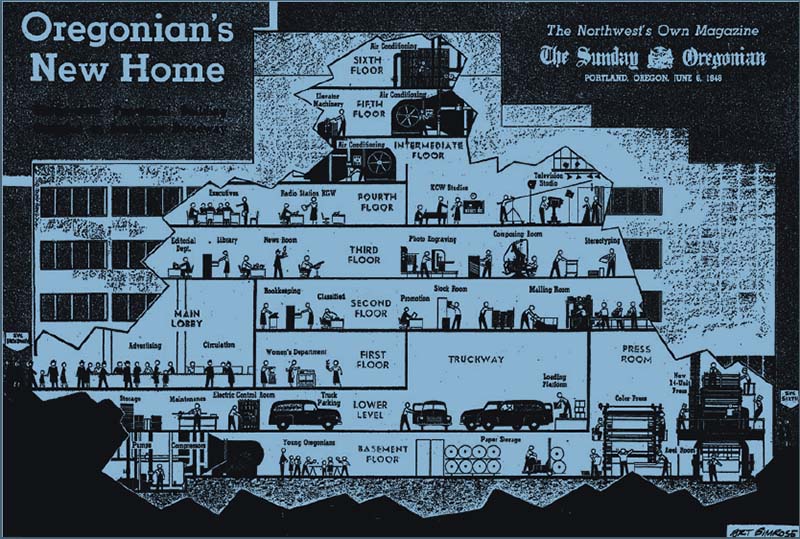
Having the initial diagram established created a filter for the mountain of feedback the team was given. Aside from the 50 employees in our Portland office, the 20 employees in our Seattle office also were given the chance to weigh in. “You don’t want to create a Frankenstein project of all of these different ideas,” laughs Whitney. “You can get distracted by too much feedback. For us, once we established a physical graphic representation of what we were trying to achieve, we were able to have something to check things against. Even when it got into value engineering and cutting costs, making those decisions was easier when we had something to check against .”

Developing the Design
Although there were multiple all-office meetings and charrettes to gather input, all three agreed that the most influential was a biophilic charrette that occurred early in the project. Biophilia literally means “love of nature” and is a study of the important relationship between humans and the natural world. The biophilia charrette specifically focused on over a dozen elements including the sights, sounds, and smells of the natural world; how nature-like variations in water, lighting, and airflow are incorporated into a built environment; and visual design elements that mimic such natural landforms as cliffs, caves, and canyons. Not only is biophilic design a relatively new concept in architecture, it was also fairly new to SRG .
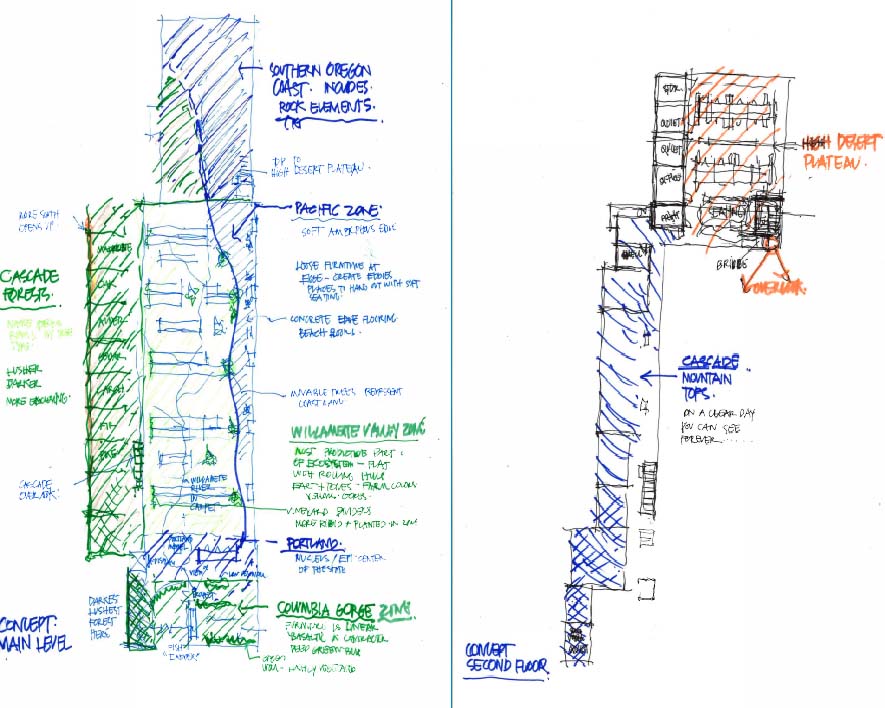
“Being your own client, on one hand it is a hefty task that comes with a lot of responsibility, but on the other hand it gives you a lot more opportunity,” says Whitney. “We might push some of our clients to have a biophilic design charrette, but it isn’t something that will always be a reality. We were able to be the guinea pigs for things we might want to use with clients in the future.”
The results from the charrette had impacts on the final design. Emily explains “We got some concepts out of the charrette that remain in the project, specifically how we move through the space. It really affected how we thought about the primary circulation, how the stairs were oriented, and where people were sitting and feeling protected.”
Diversity and equity influenced the design of the new space, too. As Whitney describes, “Equity was a big point that came up time and time again in regard to design. That became a big driver for where within the space we had the open workstation area and how the workstations were aligned. They are intentionally aligned perpendicular to the window wall so that no one has and face away from the windows, so it was all about equity in terms of access to views and daylight.”

There was also special attention paid to a diversity of work styles. There were many conversations about how SRG works in 2017 versus how we’ve worked in the past and how we want to work in the future. “That I found really fascinating, when we were able to have that conversation about different work habits and how we can do our work best,” recalls Whitney. “We talked about having physical space that supports collaborative design, what resources are shared, and how we give people their individual spaces. Ultimately having a space that supports doing good work and collaborative work, while also being thoughtful of whether people prefer a quieter workspace but still want to be connected to the open studio.” Bethany adds “And also different ways people work, personality-wise. In the small example of the sit-stand desks, people have a lot of different preferences, and having that attention to personal experience is evident.”
The personal experience was a top priority. One example is the quiet office spaces, which are not available in the current office. When an employee is dealing with a personal matter, needing to make a private phone call, or just having a rough day, there really isn’t anywhere to go. “You have to go out on the street which is even more public, and that’s definitely been something that’s been hard for me in this space. I really wanted to make sure that there were good private spaces that were soundproof and weren’t in the middle of the space.”
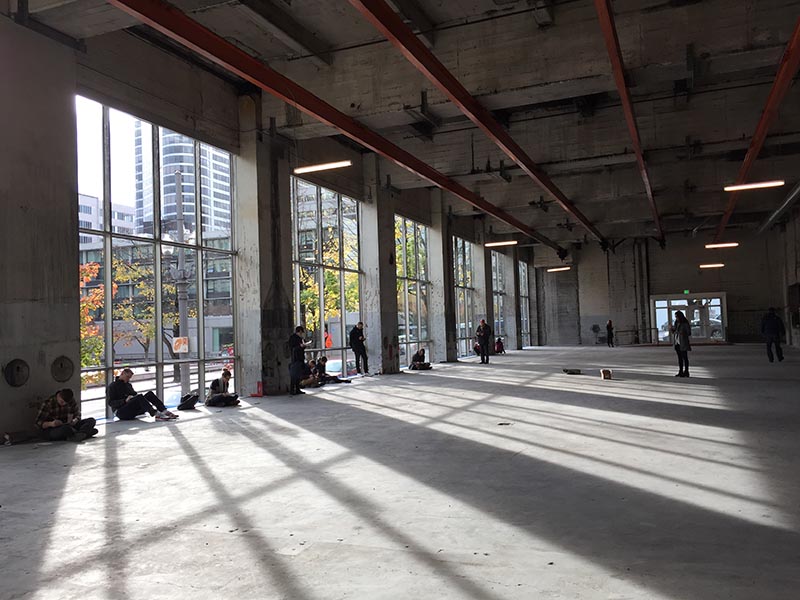
The Future
As they look ahead several months to when we’re moved and settled into the new space, there are things the three are excited about regarding how office culture will change. Whitney says she’s looking forward to having a dedicated space to eat lunch together. She has worked in SRG’s Seattle office and appreciates that they have the space to do that. “Whoever has time will eat lunch together and it creates more of a community. That is something that we strive for in our culture now; I think the physical space will push that part of our culture a lot further.” Emily is looking forward to the community aspect, as well. “Here we are somewhat isolated into groups, but I have this feeling that the new office will be more playful.”
Bethany is excited about the new workspaces. The Resource Library, for instance, will be a more central part of the office instead of its current life as a separate room on another floor that most people do their best to avoid. “It’s going to be a much better way to work – being surrounded by resources instead of having to go search them out.” And instead of having to vie for time and space in just a few conference rooms, larger teams will have their own dedicated meeting pod where they can leave their work on the walls. “I can’t wait to walk down the hall and see all these other projects pinned up. Having the ability to experience and see what other people are producing in a more direct way rather than waiting until a Thursday pin-up or a specific charrette meeting will improve our day-to-day so much.”
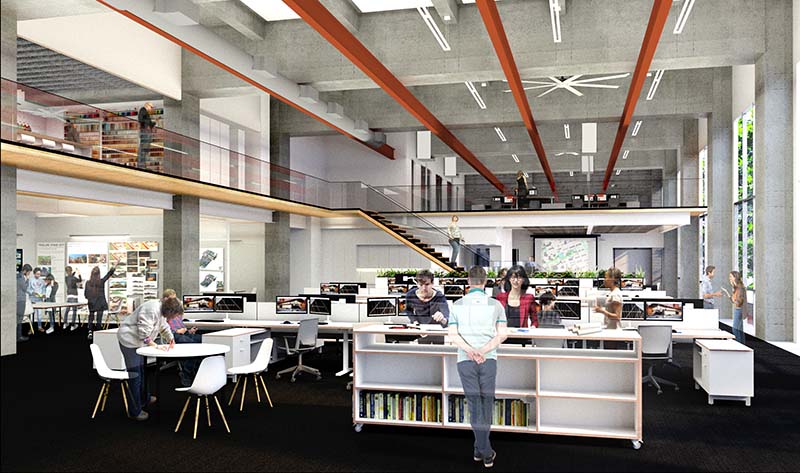
There are anxieties, as well. Although the team is confident about the major decisions, there are smaller decisions that have kept people up at night. “Pretty much everyone on the team has lost sleep at one point or another!” laughs Whitney. And then there are the parts of the design that can’t be studied ahead of time. “One thing I’m concerned about is sound,” says Bethany. “How live will the space be? But that’s an adjustment. Some people will love it and other people will need to use the quiet rooms more often. That’s the nature of the space.” Whitney adds “We’re pretty much asking that there’s a behavior change from everyone.”
An all-office meeting is planned before the move to address some of the issues and changes. This includes everything from how we’ll need to respond differently to neighborhood activities (as we’ll be on the ground floor instead of two floors above it) and how the project pods will be used and shared, to new expectations for where to keep shared resources and being conscientious of those working around us.
The future changes won’t just be limited to our office space. The team has learned skills from this process that they will take to future projects and teams, most importantly in communication. “It’s been a good lesson in terms of figuring out the best ways to communicate with people,” says Whitney. “Especially early on in my career, it’s cemented the idea of working very iteratively: coming up with lots of different concepts and being able to show those concepts and work through them.” Emily agrees. “It pushed me to really think about important communication skills, because these are people I care about and people I want to continue working well with. It pushed us all to grow a bit in that way, because it is more emotional than a typical project.”
How will it all work out? Will we be able to settle into the new space with just a few minor hiccups, or will it cause a noticeable cultural shift? Follow our process at #SRGNext.
Emily Dawson

